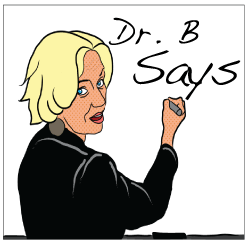
 Oral Production (Speaking) in the SL Classroom
Oral Production (Speaking) in the SL Classroom
 |
Speaking is found on the tree as one of the branches; it is labeled oral production and is one of the skills students are to learn in their language development. The ability to converse is highly valued by students, but teachers often find it a skill that is hard to develop. Students often feel a great deal of anxiety around speaking. In this section we will discuss the importance of developing excellent oral skills and how teachers can go about promoting this development. |
Why is speaking important?
The goal of language is communication and the aim of speaking in a language context is to promote communicative efficiency; teachers want students to actually be able to use the language as correctly as possible and with a purpose. Students often value speaking more than the other skills of reading, writing and listening so motivation is not always as big of an issue, but what often happens is students feel more anxiety related to their oral production. As speaking is interrelated with the other skills, its development results in the development of the others. One of the primary benefits of increased communicative competency is the resulting job, education and travel opportunities; it is always an asset to be able to communicate with other people.
back to top
What should teacher know when planning speaking activities?
In planning speaking activities, teachers need to decide whether students need high structure (for example drills and controlled practice) for practice in learning or Getting It or low structure (for example role plays, simulations) for Using It. Questions to consider in relation to speaking include the following:
-
Is it necessary to review the language to be used in a task?
-
Will the learners work in pairs or small groups?
-
How will learners be monitored as they complete task?
-
How will teachers provide feedback to students?
When developing activities, lessons or tasks around speaking, teachers should also be aware of the 3 areas of knowledge that speaking encompasses. Each area should receive attention, though not necessarily all at once. It is advisable to inform the students of these areas, so they are aware of the purpose of the activities.
-
Mechanics: This area involves the different pieces that make up speaking including pronunciation, vocab, grammar and word order.
-
Functions: This area describes the uses of speaking whether for transaction or interaction, and when precise understanding is or is not required.
-
Social/Cultural rules and norms: This area involves the more sublte cultural value inherent in the language’s culture, such as turn taking, social norms, roles of participants, etiquette and social register etc.
Taken from http://www.nclrc.org/essentials/speaking/spindex.htm
When creating activities that focus on student speaking, teachers can create activities relative to different types output and their purposes:
- Structured output focuses on using a correct form, usually something specific that has been worked on in class. The purpose it to develop comfort with certain forms/structures
- Communicative output focuses less on form and more on the completion of a task that includes using specific language. The purpose is for the students to get their meaning across; accuracy not as big of a consideration.
Taken from http://www.nclrc.org/essentials/speaking/goalsspeak.htm
back to top
How are some tips for promoting speaking in the SL classroom?
When assisting students in the development of their oral skills, there are some tips and techniques that teachers can use to minimize students’ anxiety and to make the development as efficient and practical as possible. This way, students will learn more and have increased motivation to continue this skill development.
- Create authentic practice activities that as similar to real-life as possible
- Create different contexts in which students can practice in order to broaden their vocabulary and experiential horizons
- Provide scaffolding and support for each context; this means making sure students are aware of the appropriate vocabulary and what social or cultural norms are appropriate
- Don’t focus solely on errors; correct as much as each student can handle, more advanced students can often handle more correction, but avoid excessive correction if it will promote anxiety
- Be aware of Higgs, what students at different levels can focus on
- Give students options to use when responding to questions and teach them those options; allow them to use minimal responses if it reduces anxiety but make sure all students are aware of the possibilities. This allows for differentiation, as students can use the level of response that they feel comfortable with
- Develop routines involving certain scripts (ie greetings, compliments, asking certain questions) so students become comfortable and familiar with those scripts
- Use gestures to help get meaning across and encourage students to do the same; emphasize that what is important is the meaning.
- Make it fun!









